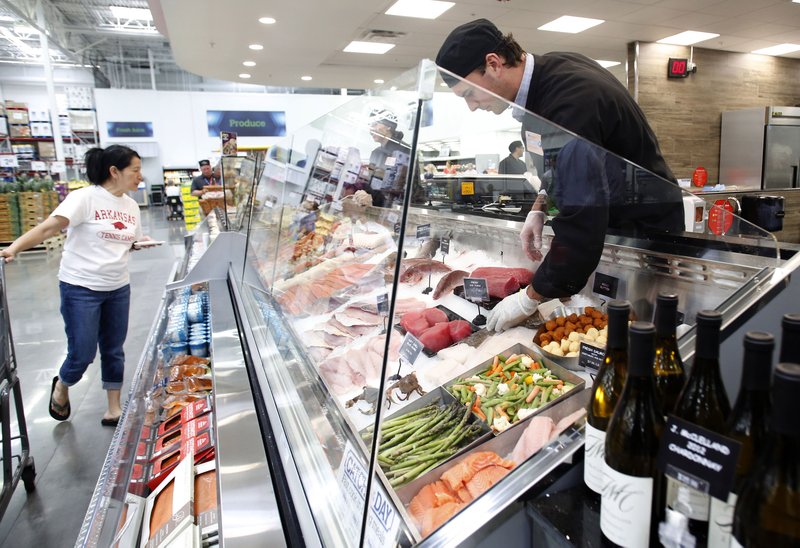Wal-Mart Stores Inc. is testing drones inside its distribution and fulfillment centers, believing the technology could be rolled out in six to nine months as a way to check inventory more efficiently to keep up with customer demands.
RELATED ARTICLES
http://www.arkansas…">Wal-Mart notebook http://www.arkansas…">Wal-Mart Radio DJs entertain at Bentonville museum
The retailer provided a peek of its use of the technology during a media tour of its Bentonville distribution center Thursday. The drone is fully automated, but was manually controlled during the demonstration as it flew up and down warehouse shelves, captured images and determined whether products were in the right place in the distribution center.
"We are extremely early in test-and-learn phase," said Tracy Rosser, Wal-Mart's senior vice president of transportation and the supply chain. "We do not have a scale plan at this point. We are all about testing and learning."
Wal-Mart outlined the potential benefits Thursday as it continues to look for technological solutions for business problems.
Checking inventory in distribution centers is done by workers who have to use lifts and are harnessed in for safety as they scan products throughout the warehouse. The switch to drones could cut the time it takes to check the inventory throughout a facility that spans roughly 1.2 million square feet, or the equivalent of 26 football fields, from one month to one day.
"It's taking a largely manual process and converting it into a process very safe and highly efficient," said Shekar Natarajan, Wal-Mart's vice president of logistics strategy.
Natarajan said the cameras mounted to the drones have been custom-built for the retailer and give Wal-Mart the ability to deploy technology that can capture video and images in real time. Natarajan said when the technology is rolled out, distribution centers will have a central location where the automated drone's activity can be monitored and inventory errors can be quickly corrected.
Inventory is the only application being tested at the moment, but monitoring crops and package delivery also are possibilities.
"There are many, many applications for drones," Natarajan said.
Wal-Mart said it is constantly testing ways to become more efficient as it tries to deliver a seamless shopping experience for customers by providing them with avenues to get any product, anytime, anywhere. The retailer recently announced its ShippingPass subscription program was trimming the time for deliveries from three days to two days to better rival Amazon.com. Wal-Mart also has expanded its assortment online to more than 10 million items and continues to expand its online grocery pickup service.
Speeding up inventory is critical in distribution centers and e-commerce fulfillment centers that are more than 1 million square feet in size. Retail consultant Carol Spieckerman said any technology that improves efficiency and Wal-Mart's in-stock items is good for the company, its suppliers and customers.
"Customers get frustrated when items they count on aren't available and often this is caused by back room confusion," Spieckerman said. "The drones will mitigate these issues and become an even greater asset as Wal-Mart continues to evolve its site-to-store proposition."
In addition to testing drones, Wal-Mart on Thursday showed off one of six "automatic case label" machines that significantly trims the amount of time it takes to sort merchandise in the distribution center. A single employee would need up to three hours to work through 200 to 300 cases, while the machine can process 700 cases in an hour, according to the company.
Another effort to improve efficiency is the use of forklifts that run on hydrogen instead of battery power. The company said refueling the company's approximately 4,000 hydrogen forklifts generally takes 3 minutes. Recharging batteries could take up to 12 minutes as long as forklift drivers weren't having to wait in line.
The transition to hydrogen-powered lifts has occurred in 17 of Wal-Mart's 190 distribution centers. The retailer plans to roll it out across the country.
"It's much, much better for us," said Elizabeth Fretheim, Wal-Mart's senior director of logistics sustainability.
Business on 06/03/2016


